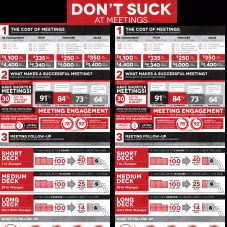 Poker can be very addictive for some and highly intelligent for others. In fact, there are several parallels found between success playing poker and running an auto industry business.
Poker can be very addictive for some and highly intelligent for others. In fact, there are several parallels found between success playing poker and running an auto industry business.
Like poker players, auto industry business leaders use logic and reason to make strategic decisions and they know how to calculate risk. They know how big the market is and how much they hope to conquer.
An article in Fast Company talked about how to know if you’re the fish or the shark at the table. Here are the lessons they provided that business leaders can apply throughout their careers:
In Texas Hold’em, you are dealt two cards you can see but your opponents can’t. Each player has control of the situation, they either decide to be in the hand or fold.
As a business leader, you are in control at the start of any situation. You decide to do something or you don’t. Whether it’s responding to an email, seeing a sales rep, or hiring an employee, you either fold or stay in the hand.
In poker, understanding the power position is the most important because you are able to make decisions after you’ve gathered information from your opponents.
In business, when a competitor declares what they want first, you have information they don’t. In poker terms, you have the power of position. In business and in poker, it’s that ability to use your power of position regardless of the strength of your hand which separates the good players from the great ones.
In poker and in business, calculating the odds and expectations are important. In poker you don’t have to be a math genius. Poker players base decisions on expected value. The calculation doesn’t ensure every hand will be profitable, however as long as a player plays hands with positive expectations and folds hands with negative expectations, they will be profitable in the long run.
Business leaders do something similar with decision trees. They assign each branch with probabilities and likely profits and choose the branch with the highest expected value.
Poker players watch and learn how their opponents play and make adjustments to how they are playing. Business leaders do the same. They both need to learn the comfort zone of their competitor so they can adjust to take advantage of their competitor’s style.
Poker players want as many opponents as possible when they have a great hand. They slowly put their chips in the pot and never bet so much their opponent would fold. They want to make the pot as large as possible. Then in the last round of betting, they put all of their chips in.
In business, they apply the same approach. When a business leader knows they have an exceptional product no competitor can match, they expand the market during the introduction and early growth phase by alluring competitors to invest in promotion and advertising. Once the pot is as large as possible, they put all of their chips in and go for market domination.
The most important lesson you can learn in poker, is looking at everything through your opponent’s eyes. They don’t make decisions on what they have in their hands, but rather what their opponent has.
When a business leader sees through the eyes of the customers, competitors, their employees, and stakeholders, they discover the “truth in their error” or “the error in our truth” according to the Fast Company article. Once you’re able to see through the eyes of others, decisions become much easier.
What business lessons from playing poker would you add?
Image: BaileyRaeWeaver via Flickr, CC 2.0
 Meetings are part of life for many people, and some people hate them.
Meetings are part of life for many people, and some people hate them.
When you walk away not knowing what you were supposed to get out of it, or you were given a 40 page slideshow that lost your attention at slide 15, it feels like a waste of your time. Few people come prepared to participate and they aren’t as effective.
I came across some great statistics from an infographic by SalesCrunch.com, Don’t Suck at Meetings.
A few statistics stuck out:
The headline of an article on Open Forum caught my attention: How to Hold Meetings that Nobody Hates. It provides simple advice that is easy to follow.
Communicate the point of the meeting and the topic to be discussed prior to the meeting. Instead of providing a memo for everyone to read, provide an agenda so you don’t lose focus and stay on course. This gives your team a heads up so they can make notes and contribute to the discussion.
Set a time limit to ensure you are getting through all the points of the agenda. Meetings should last about 30 minutes so set a start and finish time and stick to it.
Build questions and discussion points into the agenda if you want engagement. Even though you’re running the meeting, your voice is not the only voice that should be heard. Meetings are also a good place to recognize your team for a job well done. Recognizing them motivates them to keep meeting their goals and getting their tasks complete.
If the topics of your meeting don’t apply to your entire team, then don’t hold a mandatory meeting for everyone. Keep meetings productive with smaller groups of only the people affected.
Meetings should be useful for your team so take the time to plan and prepare. Use them to make decisions, generate discussion and feedback, get new ideas rolling, and set a course of action.
What tips would you provide to keep your meeting from being boring?
 Being a leader entails responsibility and respect plays an important role in being successful.
Being a leader entails responsibility and respect plays an important role in being successful.
Some think they are entitled to respect because of their position or experience, but you need to earn it rather than demand or expect it.
If you have respect, your team will work harder and longer to help you reach your goals.
Kevin Daum of Inc. provides seven tips to help you be the leader who earns, not demands, respect:
You will lack credibility if you say one thing and do another. Don’t be a hypocrite and practice what you preach. To earn respect, lead by example.
Keep all of your commitments. Being late shows a disregard for others. Time is valuable for successful people so take control of your calendar.
Let your team know the best way to reach you. We are overloaded with ways to communicate from social media, to email, to text so limit your channels and respond within 24 hours if you want to appear communication worthy.
Do your homework and state well thought-out facts. When information is too scarce to know for sure, take it as a qualified risk. If you’re wrong, own up to it, smile, and be glad you learned something.
The Inc. article says if you aren’t erring, you are not trying. It also suggests setting an example for how to shake off a failure and bounce back. Encourage people to experiment and be creative in a safe environment. Know mistakes happen to everyone, even the smartest leaders.
Earning respect isn’t a one-way street. Whether your team was wrong or right, show them the same respect that you expect from them. You have to give respect to get it.
Use active listening skills and really hear what people are saying. If a team member is struggling, provide the support they need. However, be careful. According to Daum, respect is lost when the boss placates habitual troublemakers at the expense of the team’s success. A good business leader knows when to support weak players and when to cut them loose when they aren’t pulling their weight.
To be an effective leader, one needs to earn trust and respect. Respect is not something handed to you, but without it, it would be difficult to accomplish your goals.
How do you earn respect from your team?
 At some point in your career you will face failure. It’s inevitable, but failure is an opportunity to begin again. It’s a process, not an event, which every, single person will encounter.
At some point in your career you will face failure. It’s inevitable, but failure is an opportunity to begin again. It’s a process, not an event, which every, single person will encounter.
Patricia Fletcher, contributor to Inc. says her friend Jeanne Sullivan, a general partner at StarVest Partners, will not invest in a CEO who has not experienced failure.
Why?
“An investor needs to be able to trust your response to failure will make you and your business stronger,” she says.
Fletcher offers some tips on how to embrace and deal with failure.
Fletcher says one of the best things you can do to regain your emotional intelligence is to take yourself out of the mix.
Take a breath to clear your head. You can take a walk, turn off your phone or email, or don’t sign into Facebook or Twitter. Life goes on, so enjoy the simple joys to lift your mood and get back on track.
No matter how confident you are, everyone is afraid of failure, but don’t let it hang over your head.
Fletcher suggests you simulate the experience. Write down what you feared the most, how you felt, and what you thought would happen if you failed. For each item on the list, create a plan and act on it.
Pain from failure is temporary and goals are not. Focus on what is ahead, the bigger picture, if you will. Be open to corrections, and run your business as usual.
Your successes define you, not your failures. Each failure is a learning experience you can take with you for the rest of your career.
Failure is common, but when we meet it, it feels like we’ve crashed into a brick wall. As leaders, we need to get back up and continue to move forward.
How do you deal with failure?
Image courtesy of Stock.xchng
 Crowdsourcing isn't just a tool for innovation and hiring anymore. According to a Fast Company article, crowdsourcing can provide an excellent roadmap for more effective leadership.
Crowdsourcing isn't just a tool for innovation and hiring anymore. According to a Fast Company article, crowdsourcing can provide an excellent roadmap for more effective leadership.
Leaders can get great answers by asking the right questions, and it’s a skill more leaders need, according to Stanford professor Tina Seeling in her book inGenius: A Crash Course on Creativity.
Social media has clearly opened the door for more collaboration across industries and sectors, but business leaders can turn to the crowdsourcing model to improve customer experiences and build better products and services.
As workplaces become more collaborative and the traditional hierarchies of organizational structures erode, businesses have to look outward - to their customers - to identify ways to improve and innovate. The wisdom of the crowd can drive great results for building better business insights when companies ask the right questions.
For many business leaders, knowing the right questions to ask isn’t always easy. Inviting customer criticism and feedback in the public space of social media seems counterintuitive.
The open business model that embraces collaboration and innovation internally and externally hasn’t been fully realized across all industries. Regardless, the notion business leaders have all the answers and are the knowledge centers of their organizations stifles business development and innovation.
So how can you become a better leader by asking the right questions?
Here are four ways leaders can be strategic in tapping their own organizations for wisdom and insights from Michael Papay:
All you have to do is ask.
If you needed to ask just one question today to move your business toward stronger results, what would it be?
 Authentic leadership is a style that is consistent with a leaders’ personality and core values, and that is honest, ethical, and practical.
Authentic leadership is a style that is consistent with a leaders’ personality and core values, and that is honest, ethical, and practical.
“I believe authentic leadership does not come from title, social stature, or the size of one’s paycheck, but rather from how you live and the affect you make around you,” says Faisal Hoque in a Fast Company article.
Author Bill George popularized the concept of “authentic leadership” in his 2003 book “Authentic Leadership” and developed further in the later book “True North.”
Hoque shares some fundamentals to become an authentic leader.
The future is full of promise. If a door closes, a new one always opens. You may not have all the answers at your fingertips right now, but they will come. If you focus on one thing rather than the big picture, ask yourself what else is at play. You might discover ways to connect it to other areas of business.
“It’s often only through hardship that we discover our inner strengths and capabilities,” says Hoque.
Leaders can be effective in both good times and bad. When times are hard, effective leaders need to inspire and engage their teams.
Hoque says, “The people we surround ourselves with make the difference between failure and success.”
Avoid people who waste your time and bring you down. Surround yourself with a strong base of talent and trust they will get things done.
Authentic leaders constantly push the envelope and raise standards. Don’t seek perfection. No human being is perfect and it sets you up for failure.
Authenticity comes from the ability to adapt to changing circumstances and situations.
Understand and assess a situation, modify plans, rally your team, and change a course of action.
Flexibility allows one to go with the flow, to keep stress levels manageable, and to maintain relationships that are critical for overall success.
Hoque says this is the mantra of an authentic leader. They are someone who does not follow in someone else’s footsteps. Their comfort with uncertainties drives them to make a difference.
To become an authentic leader requires a commitment to discover and develop your leadership style.
Bill George suggests, to begin to develop your authentic leadership style, you should begin by assessing yourself against the five qualities of an authentic leader: Understand your purpose, practice your values, lead with your heart, establish connected relationships, and demonstrate self-discipline.
What is your leadership style?
 In a blog post on Intuit Small Business Blog, Nash, said, “Mastering the art of delegation is key to success in any business, but letting go of control isn't always easy.”
In a blog post on Intuit Small Business Blog, Nash, said, “Mastering the art of delegation is key to success in any business, but letting go of control isn't always easy.”
As leaders, it’s sometimes hard to give up control and, because we want our nose in everything, it’s hard to delegate tasks to others.
However, a person’s time can only scale so much - there are only 24 hours in every day. If our goal is to grow, it’s not possible for us to get everything done on our own.
In the post, Nance-Nash offers some expert advice to learn how to delegate.
If you don’t trust the people you delegate work to, you’ll worry, micromanage, and may make a nuisance of yourself. Pick people who are creative and self-motivated enough to work so you don’t have to constantly give instruction. Be sure you really give them responsibility. You can shadow their efforts the first time or two they try the task on their own, but eventually leave them to their own devices.
Delegation is an act of trust. The key to being a successful delegator is to hire the right people. The most important part of delegation is to choose the best people for your team and business. You need people who can successfully carry out the responsibilities you delegate just as well as you could.
Chris Smith, co-founder of the management consulting firm Arryve, told Nance-Nash, “If you’ve hired good people, the trust you need [to establish] before you delegate comes faster, and the fear of failure that holds it back diminishes.”
Things you don’t want to delegate include items of highly sensitive nature, such as salary reviews and disciplinary actions, and very strategic decisions and work that get you toward the vision and annual goals.
To delegate client-facing work, choose a team member and slowly integrate them as the lead. Introduce them to the customer, begin to include them in emails and/or calls, and have them do the work. Once they take over the client, you still need to communicate with them and make sure things run smoothly. Communication is key. Set measurable goals, and monitor the progress.
Delegation is an important skill to cultivate. It takes a strong person, and a good leader, to delegate tasks. It frees up your time to take the truly important aspects of your business which will lead to greater success.
What is your trick to let go emotionally?
Image courtesy of Stock.xchng Networking is about building relationships and is a critical skill for leaders to have. A survey from Referral Institute found individuals who spent six hours a week networking garnered 47 percent of all business from their referrals and networks. On the flip side, those who claimed networking didn’t play a large role in their business networked less than two hours per week.
Networking is about building relationships and is a critical skill for leaders to have. A survey from Referral Institute found individuals who spent six hours a week networking garnered 47 percent of all business from their referrals and networks. On the flip side, those who claimed networking didn’t play a large role in their business networked less than two hours per week.
“Not all networking can be judged on equal terms,” says Tara Horner, contributor to Smart Blogs on Leadership. “Many people could gain more from their networking efforts if they only avoided some costly mistakes. Others do not know enough about what works and what doesn’t, and thus lack confidence.”
Horner offers some common networking mistakes business leaders should avoid.
To prepare for networking, you need to have a clear goal. It could be to find a new job or to gain new business. “With a set purpose, you will be able to target your goal contacts and better prepare for networking opportunities,” says Horner.
Instead of targeting anyone who crosses your path, you can better prepare for networking if you have a client or contact in mind. It’s important to know your target market so you know with whom to spend your time. “Do not go to the point of inflexibility,” warns Horner.
Think outside the box and change course if an off-target comes your way.
Business cards are a necessity. No one wants to sit around while you type their contact information into your phone. It looks unprofessional and you look unprepared.
“A rude networker is losing at networking,” says Horner.
Treat your prospects with respect. If you don’t, why would they spend their time and money with your company? Give people time to talk and really listen to what they say, but also be respectful of their time.
You should never stop building your network because you never know when your biggest client could leave you to join your competitor. “Steadily building your network ensures you have a pool of contacts at the ready,” says Horner.
It’s easy to hide behind a computer and send an email or social media messages. It’s also easy to delete a message without much thought. A meeting in person is hard to ignore or forget, says Horner. When you attend a networking event, the goal is to meet new people so introduce yourself, ask questions, and engage in conversation.
The most common mistake is to not follow-up. Horner says, “Many people are simply too busy — your offer sounded great, perfect, in fact, but they don’t have the time to dig out your business card and make the call. So do it for them!”
Give them time to think your offer over then make a call, send an email, or leave a social media message.
Big, successful businesses don’t happen from years of slaving alone. It’s about whom you know so focus on truly building relationships.
What other networking tips would you add?
